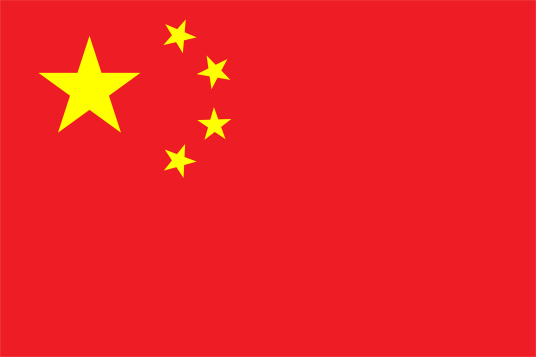
Application of oil purifier (filter) in power plant turbine oil system
- 发布日期: 2024-04-10 16:55:19
- 作者:
- 759 次浏览
1. The possible harm caused by water in the steam turbine oil of the power plant
There are usually two possible forms of moisture in turbine oil: dissolved water and free water. Dissolved water is the water that is evenly distributed in the oil. Under the operating conditions of the power plant, the maximum concentration of water dissolved in the oil is about 150mg/L (the specific value depends on the composition of the oil, temperature, additives, etc.). Free water is water that exists in the oil in the form of tiny water droplets, which are sometimes difficult to separate from the oil due to their impurities and small particle size. Lubricants containing free water have a cloudy appearance, while lubricants containing only dissolved water have a transparent appearance. Due to the strong mixing of the turbine tank system in the power plant, only water that exceeds the solubility will exist as free water. In other words, if the oil contains free water, the appearance is turbid, and the water content is above 150mg/L.
The hazards of more water in steam turbine oil are mainly manifested in the following aspects:
(1) Oil emulsification may occur, so that the adhesion of the lubricating oil is not good, the adhesion of the oil to the friction surface is not enough, the oil film is damaged, and the rotor journal may have dry friction with the bearing bearing, so that the bearing is burned, the unit vibrates strongly, and even destroys the machine.
(2) The water content of the turbine oil will accelerate the oxidation of the turbine oil, increase the acid value, and produce more oxidation precipitates, thereby prolonging the anti-emulsification time of the steam turbine and deteriorating the anti-emulsion performance of the oil.
(3) The steam turbine oil contains water, which will make the carbon steel pipes and components in the oil system corroded, resulting in jamming, reducing the sensitivity of the action, and in serious cases, it will also cause the adjustment and security device to refuse, which will lead to the occurrence of the unit overspeed accident.
(4) The corrosion products produced by the water content of the turbine oil are an important source of particulate matter in the oil. The water content of the turbine oil will make the particle size of the oil easy to exceed the standard, and the filter element of the oil purifier will be replaced frequently, and the operation and maintenance workload will be large.
In order to reduce the harm of water content in steam turbine oil, the GBT 7596-2008 quality standard for steam turbine oil in power plant operation issued by China stipulates that the water content in lubricating oil should be less than 100mg/L.
2. Analysis of possible countermeasures
If the turbine oil contains water, we should first work hard from the source of water leakage, try to find out the leakage point, analyze the cause, and reduce or eliminate the water leakage. However, the water leakage phenomenon of many units is a long-standing reality, especially the stubborn water leakage of some old units, which is limited by many conditions and is difficult to solve.
In the case that the water leakage is difficult to change, it is an effective way to solve the large water content in the oil by using appropriate dehydration equipment to remove the water leaked into the turbine oil system.
3. The application of oil purifier (filter) in the oil system of steam turbine in power plant
At present, there are three main technologies suitable for the dehydration of steam turbine oil system: coalescence separation, vacuum dehydration, and centrifugal separation.
(1) Coalescing and separating oil purifier
The dehydration principle of coalescence separation is to use the difference in surface tension between oil and water to aggregate small water beads into large water beads and separate them. Since the concentration of lubricating oil that can dissolve water is about 150mg/L (the specific value is related to the composition, temperature, additives, etc. of the oil), therefore, the coalescing and separating oil purifier can usually only treat the water to about 180mg/L, and it is impossible to reduce it below the national standard value of 100mg/L.
(2) Vacuum dehydration oil purifier
At present, the commonly used ordinary vacuum oil purifier mostly uses vacuum tank to dehydrate, the principle is to introduce the oil to be treated into the vacuum tank, the volatile gas (including water vapor) in the oil volatilizes into the vacuum tank, and the oil after degassing is gathered to the bottom of the vacuum tank under the action of gravity. Vacuum oil purifiers generally run continuously, so vacuum pumps are used to continuously pump out gas from the upper end of the vacuum tank, and the degassed oil is pumped out from the bottom of the vacuum tank. The higher the vacuum level in the vacuum tank, the faster the degassing process and the better the effect.
(3) Centrifugal oil purifier
The centrifugal oil purifier uses the difference between the specific gravity of the water droplets and the oil to accelerate the sedimentation of the water droplets under the condition of high speed and separate. When the free water content is high, the dehydration rate of the centrifugal oil purifier is also relatively fast. It can comprehensively remove solid pollutants, water and gas, it can remove 100% of free water and 100% of free gas, as well as up to 90% of dissolved water and 90% of dissolved gas, and the water content can be controlled within 50PPM, and the good purification effect is unique in China.
 中文
中文 ENGLISH
ENGLISH

